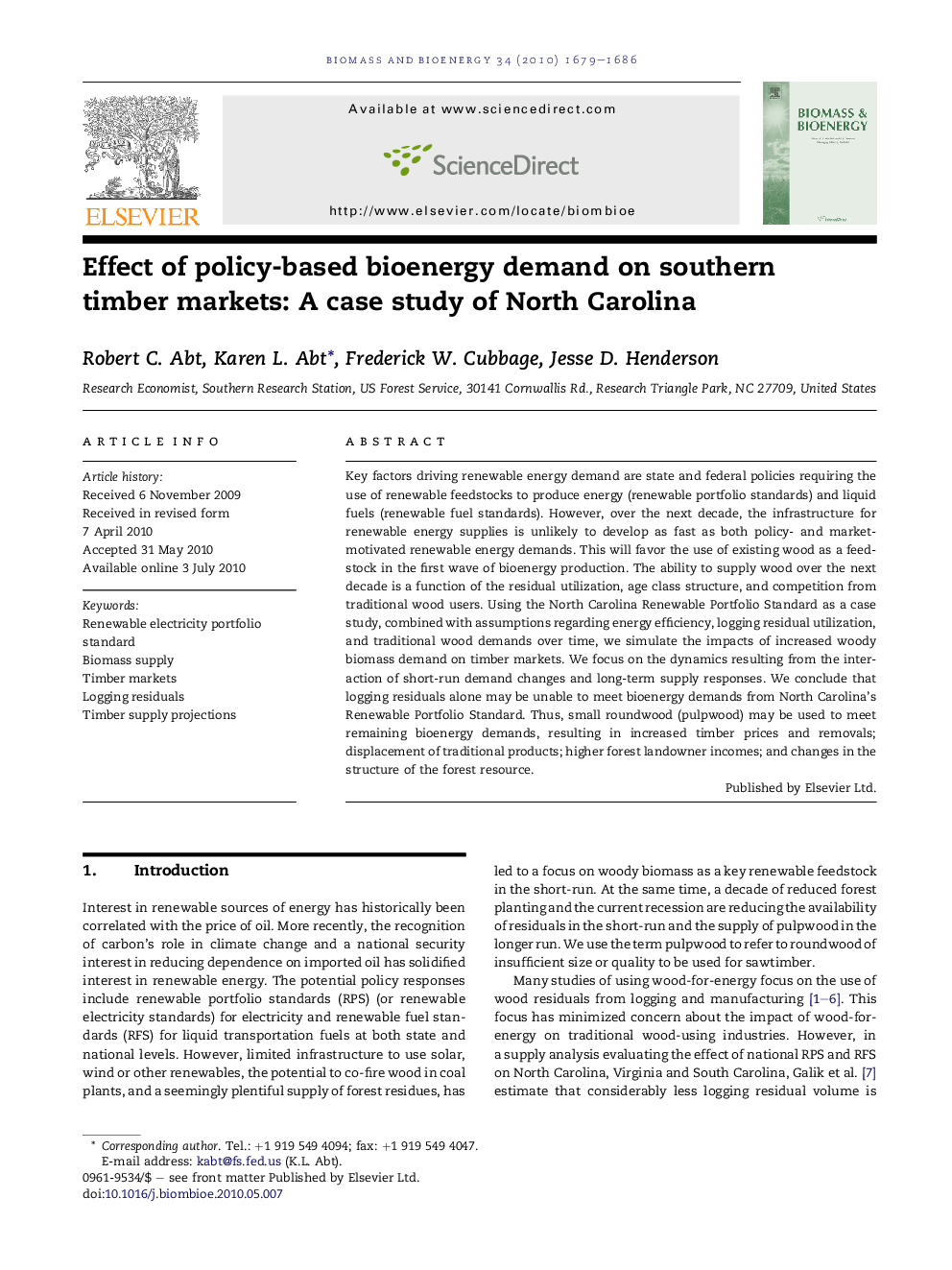| Article ID | Journal | Published Year | Pages | File Type |
|---|---|---|---|---|
| 678212 | Biomass and Bioenergy | 2010 | 8 Pages |
Key factors driving renewable energy demand are state and federal policies requiring the use of renewable feedstocks to produce energy (renewable portfolio standards) and liquid fuels (renewable fuel standards). However, over the next decade, the infrastructure for renewable energy supplies is unlikely to develop as fast as both policy- and market-motivated renewable energy demands. This will favor the use of existing wood as a feedstock in the first wave of bioenergy production. The ability to supply wood over the next decade is a function of the residual utilization, age class structure, and competition from traditional wood users. Using the North Carolina Renewable Portfolio Standard as a case study, combined with assumptions regarding energy efficiency, logging residual utilization, and traditional wood demands over time, we simulate the impacts of increased woody biomass demand on timber markets. We focus on the dynamics resulting from the interaction of short-run demand changes and long-term supply responses. We conclude that logging residuals alone may be unable to meet bioenergy demands from North Carolina’s Renewable Portfolio Standard. Thus, small roundwood (pulpwood) may be used to meet remaining bioenergy demands, resulting in increased timber prices and removals; displacement of traditional products; higher forest landowner incomes; and changes in the structure of the forest resource.
